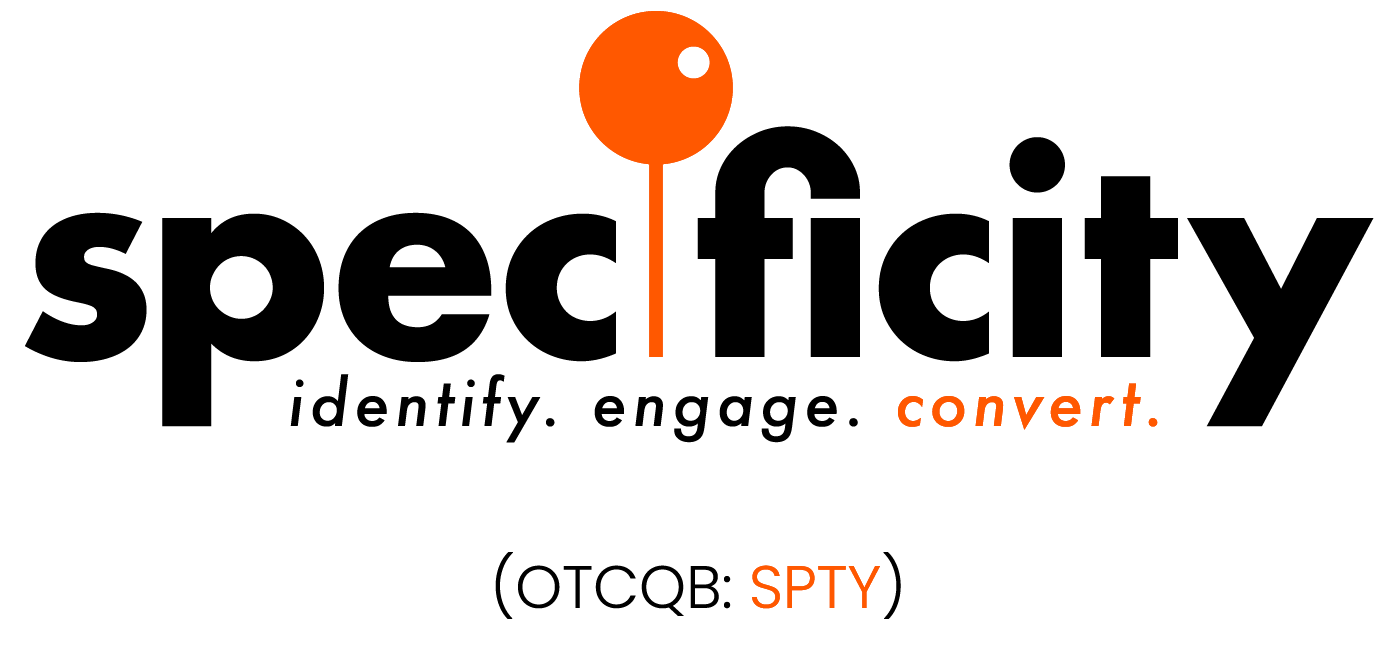With Absolute Specificity #4 – Kevin Harrington & Brandon T. Adams
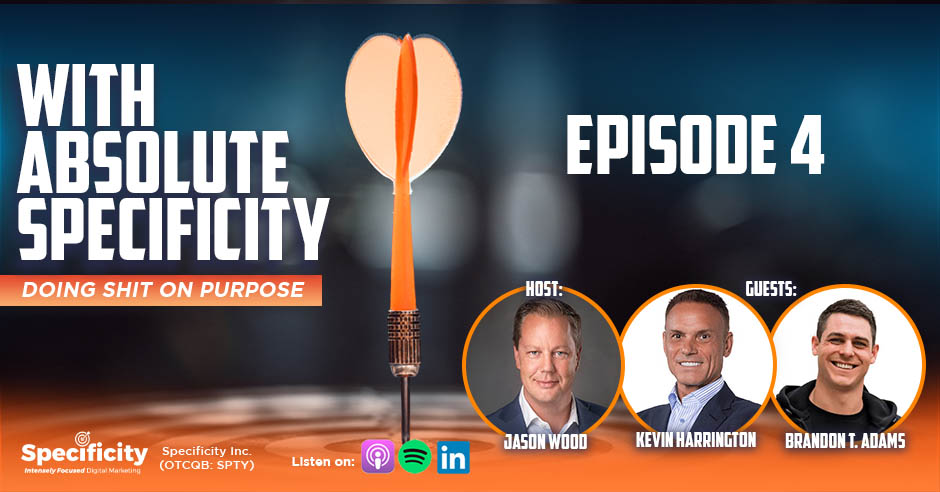
In today’s ever-changing business landscape, it’s more important than ever to have a laser-sharp focus on your marketing strategy. In this episode, we sit down with Kevin Harrington and Brandon T. Adams to learn how they’re helping their clients succeed in the face of inflation, economic downturns, and big tech updates. Kevin is a serial entrepreneur, inventor of the Infomercial, a shark on Shark Tank, and has over $6 billion in sales, while Brandon is a media expert, founder of Accelerant Media Group, and 2X Emmy Award-Winning producer. Together, they dive deep into today’s business landscape and discuss its challenges and opportunities. They also emphasized the importance of specificity, how it is important for businesses to have a focused digital marketing strategy, with more personalized messaging and better targeting. Tune in to gain valuable insights and learn from two of the most successful business minds out there.
—
Watch the episode here
Listen to the podcast here
With Absolute Specificity #4 – Kevin Harrington & Brandon T. Adams
What’s going on?
How’s it going?
There is never a dull moment. It’s always a busy day, but you take the good with the bad, Jason. It’s mostly good, though.
Thanks for taking some time out to chat with me. What we want to talk about is you guys have such a depth of experience. All three of us have the same goal for businesses that we either own or clients we’re working with, but we come from very different angles. I thought it would be great with everything going on in this country with inflation, the economic downturn, this big tech iOS update, and all this stuff to get your guys’ perspective. Tell us what you’re seeing out there in the business world in terms of how you’re helping your clients and your companies get around some of these challenges we’re facing.
I’ll take the first stab and Brandon can jump in. First of all, a couple of years ago, Coronavirus hit and all these people were at home. They were unemployed. I was one of them. I was usually on the road 200-plus days a year. I was at home. What was I doing? I was on my computer. I was on TV and watching television. The guys that bought CNN a month before, for a very low rate normally, all of a sudden, had quadrupled the number of viewers. They were getting an unbelievable response. The smartest marketers were doubling down during COVID. They were like, “Customer acquisition costs are less because there are more viewers and I’m still paying the same rates.” There was eventually an adjustment there.
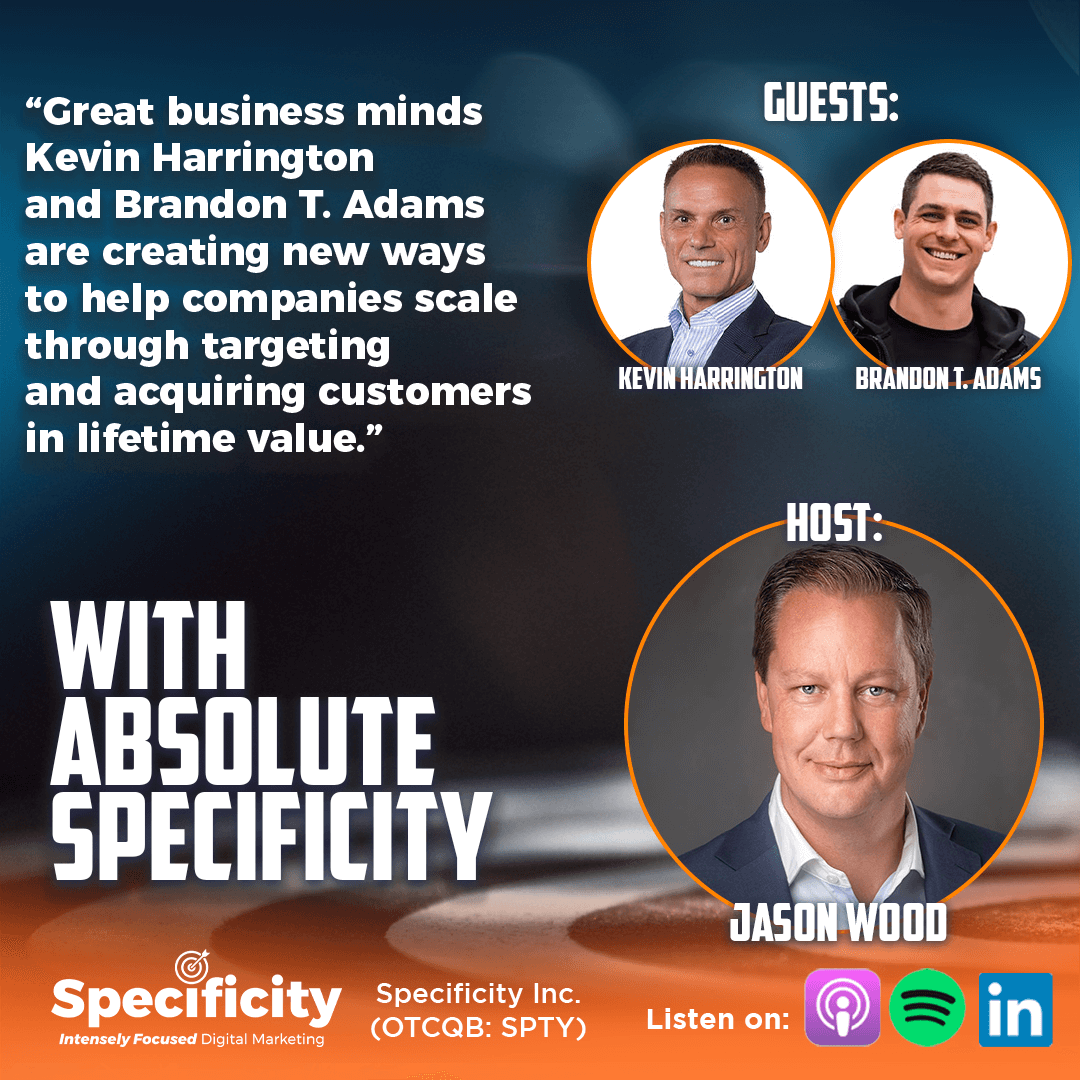
Let’s fast forward. People are back to work. I’m back to traveling. I’m not watching as much TV and on the internet as much as I was. Let’s add to that that Apple and Facebook get into their little battle. Who would’ve guessed that Facebook’s stock would drop by 60%? I don’t know how many tens of billions, if not $100-plus billion, that they lost in market value. They weren’t able to deliver the same way.
This has forced guys like us that focus on customer acquisition costs on an hourly basis. We’re running ads all day long and reading them on an hourly basis. If they didn’t work at 7:00 AM, they may not be working at 11:00 AM and by 2:00 PM, we better be out. The marketplace has required a quicker response and also a push to find new ways to get customers.
When TikTok first hit, we were like, “This seems to be something for the kids, for 12 and 13-year-olds.” Some of the biggest marketers in the world, including ourselves, are utilizing TikTok in a big way. We know a lot of stories here, but the key thing is focusing on scaling because so many companies are there. They’ve got great businesses, but they need scale. That’s what we’ve been doing for many years. Creating new ways to get to that scale is what we’re doing.
I’ll tag on what Kevin said. He saw it back on TV and the transition and the handwriting on the wall where it’s like, “I want to get out of this industry. I want to get into the digital side.” We’re almost in this new transition. You look at the iOS update. We’re running ads. We’re putting money into ads. We’re seeing the ability for targeting is not what it used to be. This is why I love Specificity so much. The ability to hyperfocus and target based on the device, location, demographic, and everything is crazy. With Facebook, the stocks are going down. I see us and it’s such a great opportunity. Not only are we helping other companies scale through that kind of targeting, but it’s doing so many other things.
From my perspective, Jason and Kevin, I’m a content guy. I’ve been creating TV shows. I’ve been creating video content. It’s all about consistency in creating that brand awareness, but you also need to go beyond that. How can you speak to the right kind of people? You could be throwing things out there and putting all this content, but if you’re not hyperfocused on who you’re speaking to, it’s never going to convert into an actual sale.
Jason, from your side of things, talk about what you do in terms of how you do the hyperfocus targeting with the clientele. I’d love for you to give an example because you did this on a call with a mortgage business. Talk to us about how hyperfocused you can be in terms of speaking to the right people who are more likely to buy.
That’s been our mantra for a long time here at Specificity. The economy has downturned a little bit. Inflation’s going to have an impact. Interest rates are coming up. We’re all watching all of this go on. Companies need more efficiency through their ads than they ever have. That comes at a time when big tech and big social lost their ability to do app tracking, which eliminated tons and hundreds of thousands of targeting selects out of their platform. What does that mean to a company that wants to market a particular product?
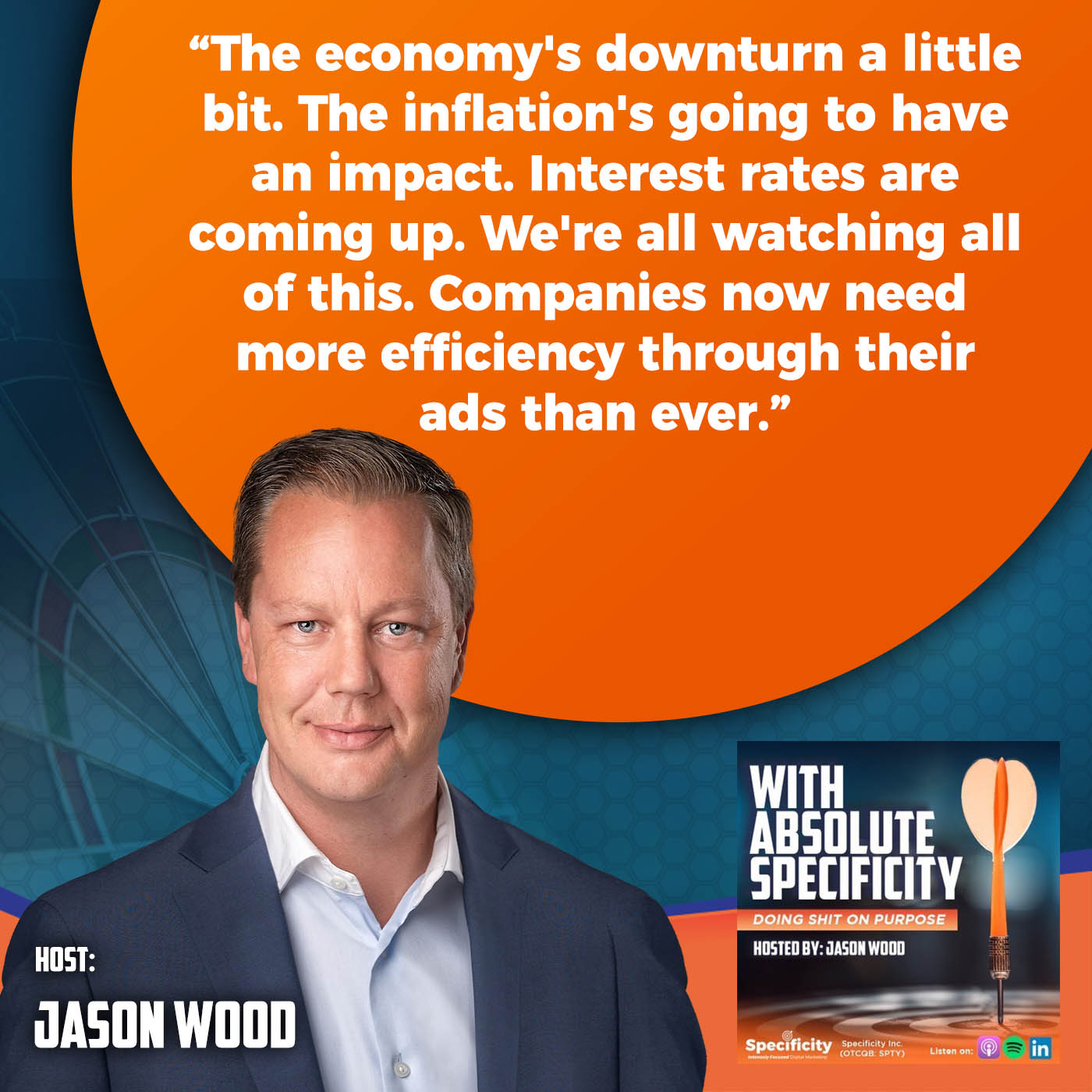
One great example, Brandon, to your point, is this window company we do business with. It’s because of the iOS update that they were hitting Pinellas County and Sarasota County. They were hitting the county. I said, “53% of people that live in the state of Florida don’t own the property that they live in. That’s 53% of your ad spend that is going to people that are never going to buy. It’s not because you don’t have the best product in the market. It’s because they’re never going to spend $50,000 on a piece of property they don’t own.” It’s little stuff like that.
This iOS update has been harmful to a lot of companies. The worst part about it that we’re seeing is that they’re not sending out emails alerting marketers and business owners, “This campaign you set up ten months ago on Facebook, for example, those targeting selects aren’t available anymore. You need to come back into the platform and reset it.”
They’re simply removing them and letting those campaigns run. Companies are getting a lot less efficient in their ad spend. It’s not fair to these businesses that are trying to get at their target audience. To your guys’ point, if you can’t deliver a product to somebody that cares about it and has the inclination to buy it or want it, then you’re wasting money. It’s busy work, right?
Absolutely. That makes total sense. Jason, the opportunity for what Specificity is bringing to the table is huge. We’re seeing this every single day. For example, we invested in a telemedicine platform. This company’s been around north of eight years. It’s a $50 million company. During COVID, their sales declined. They sell weight loss, erectile dysfunction, and hair growth, but it’s all prescription products. These aren’t things you can buy at CVS also. If you get a prescription, you can.
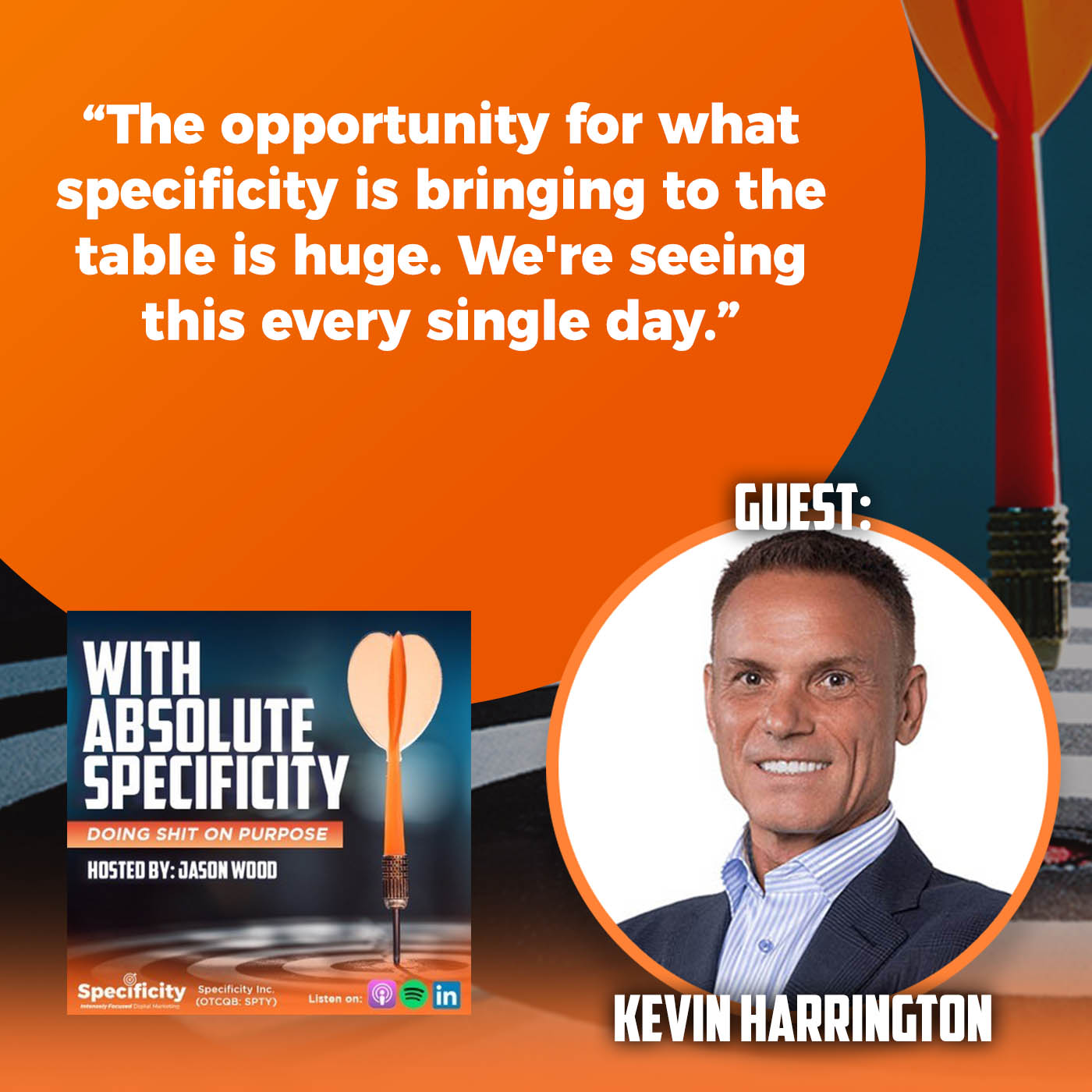
In this company, when we first got involved, we started bringing some creative things to the table. We’re running a customer acquisition cost that’s probably 30% of the gross. Whereas we look at the industry experts, one of them is a pubco. Without mentioning names, some of these guys are spending 54% of every dollar they bring for marketing. It’s pretty tough to make a profit at 54% of every dollar.
We want to have a profitable company. We brought some creative talent to the table. We brought some celebrities. We can mention them. They’re Ric Flair and Carmen Electra. We’re negotiating with some other big names. This is dropping the customer acquisition cost and giving us the ability to have a 30% CAC as opposed to 54%. We’re making a profit instead of breaking even. There are different philosophies. Some companies want to create a top line. That’s important also, but we’re creating the top line as well as paying attention to the bottom line at the same time.
Another thing to add to that, Kevin, is you look at the lifetime value of a customer. It goes back to Specificity. We can be very hyperfocused on who we’re speaking to. Not only is it saving us money on our ad spend, but the lifetime value. You look at how much money you spend. In this case, for Nu Image, this company, and being able to target and get that customer, it’s subscription-based. The lifetime value is what they tell other people. It leads to more revenue and more opportunities.
If you can get in early, this is the best time. “The best time is yesterday. The next best time is now.” If you can start marketing and start spending every dollar you spend, it’s going to save you $10. If somebody’s not spending the money on technologies like we have or the ability to hyperfocus on that ad spend, they’re losing out. This is the part I love, Jason, and you can highlight it. I know we talked with the business owner that works with us that’s in the pool space. With the fact that we can acquire customers in that lifetime value, we’re saving so much money, but also, the lifetime value is worth so much more.
Let me add one thing to that, Brandon. This is mind-blowing because we’re involved with a public company that is acquiring heating and air conditioning companies. They’re doing rollups. They’ve been around for several years. It does $1 million a year. The guy that owns it is 70-plus years old. His son doesn’t want to be in the heating and air conditioning business, so he is going to sell the business.
We come in and look. They’re an old-school company. They bill hourly. They’re getting paid for the time that their guys are able to work. We got a whole new model for them. This is why we’re making all these acquisitions when we put these people on subscription plans. The goal when we come in is customer acquisition and subscription monthly.
The value of the company to an acquisition target way down the road is double when you have people on subscription versus people that are calling on a day-in and day-out basis. This is our focus. We’re going to buy a company for $1 million. Within probably twelve months, that asset’s going to be worth $5 million to $8 million to us because we’ve increased the sales, increased the subscription, and converted people over. We’ve got revenue coming in while we sleep. That is why the acquisition guys are saying, “Get me subscribers as opposed to customers.”
When you guys talk about cost per acquisition, that’s something we track for our clients as well. It’s the most important metric in marketing, frankly. When you guys talk about that and talk about the lifetime value of a customer or a client, when you’re calculating that 30%, Kevin, that you mentioned with the ED company, are you calculating the lifetime value to arrive at that number, or are you leveraging that initial transaction to arrive at that number?
[bctt tweet=”Customer acquisition is among the most important metrics in marketing.” via=”no”]
Different companies account in different ways. In this particular case, we’re only counting the initial revenues that we’re getting because we haven’t had enough time to review and analyze the subscription revenues and the lifetime values. That particular company is conservative and focused on cashflow. It’s like, “Let’s go spend $10,000, but we want to see $25,000 to $30,000 coming back pretty quickly within 30 days.” They’re not saying, “This is worth another $800 down the road,” because we got involved in this deal and we’re converting them over to a heavier-duty subscription plan also.
Think that when you do ultimately get your subscription revenues locked in, this is the other thing that’s interesting. You might find that radio might deliver fewer subscribers than television possibly. You’ve got to weigh the different media sources to understand. You can’t say, “Lifetime value is $1,000 a customer.” Radio might have a lifetime value of $600 and television may have a lifetime value of $1,300. We are still learning all of those things in this particular company.
This is the other big thing also. It is giving influencers an opportunity to generate revenues and take a percentage of those subscription dollars also. If I answer your question, at the end of the day, you do want your CAC to allow for that subscription revenue because you know it’s going to happen. Historically, you’ve proven it. I do believe Hims, which is one of our competitors, is spending 54% of its dollars on customer acquisition. They’re probably calculating the subscription revenue that they’re generating at 54% because it’s 54% of their blended revenue streams. They have all those subscription dollars included In there.
The more we talk about this, you look at the value of the business. It’s the biggest mistake entrepreneurs make. A couple of years ago, I made the same mistake. I wasn’t building the business with the end goal in mind of potentially being able to sell it or the long-term value of the customer. I’m in marketing. Every business out there should have some kind of partner that is a marketing partner, whether they’re giving up equity or having them as a partner. That value in that marketing is such a valuable lifetime value and exponential growth in terms of down the road. The multiple will be hired.
Kevin talked about the business where they’re rolling up, the heating and air conditioning business, and then turning them into continuity products. You look at customers. If you can target the right customers and get the right customers in your database, you have that value there. How can you sell them multiple products? If you’re selling them one product, how can you have an add-on product down the road? How can you have all these different things you introduced to that customer? Long story short, to anybody reading this, you need to have the marketing team in place to be able to scale. There’s so much lifetime value that I don’t think they realize.
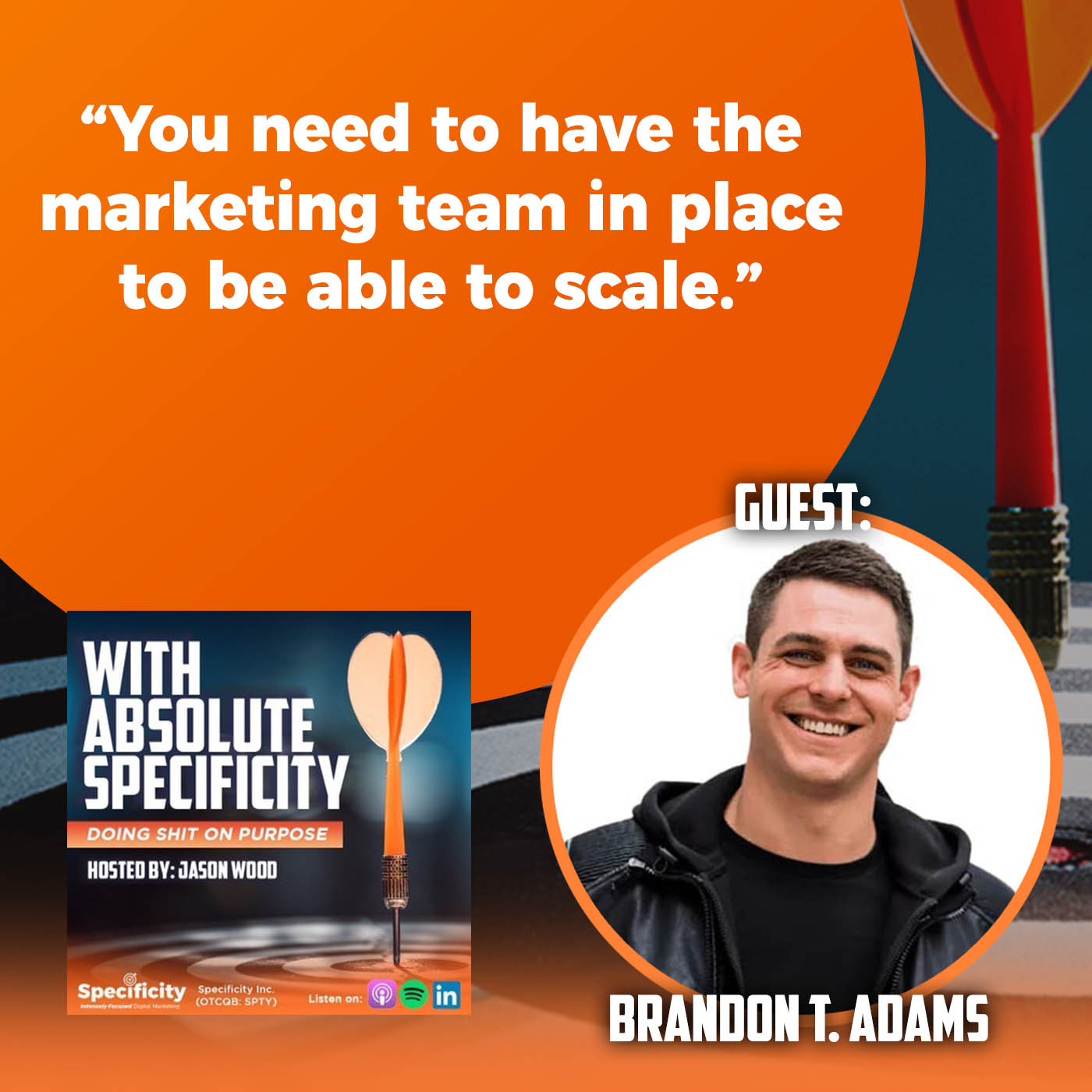
To Kevin’s point earlier, he brought up something that we deal with all the time. In fact, right after this interview, I’ll be in a meeting because we have a call with a client. That is the source of those customers. If you can bring 1 million people to your eCommerce site and convert 5,000 of them, that’s great. If you can bring in 20,000 and convert 5,000 or bring in 50,000 and convert 5,000, not only are your marketing ads spent more efficiently.
When you look at the type of customers you’re bringing in with being more targeted, not only are conversion rates exponentially better, but it’s the right kind of customer. It’s the customer that maybe isn’t price shopping and isn’t trying to commoditize your business on you. Those sources all bring in different types of people, and marketers miss that a lot.
I 100% agree.
That’s a big impact on cost per acquisition as well. It’s not the lifetime value of that customer, but also the type of customer that you’re bringing in. That company we spoke with, the guy that’s in the pool space, he’s not out here trying to sell competitively-priced cheap pools. He’s looking for a high-end pool buyer that wants the latest technology, etc. That’s a whole different animal. You can go on Facebook, Instagram, Twitter, and TikTok and throw ads in his area, but you’re going to get 1 million phone calls from people that are looking for the cheapest thing they can find. How do you suppress that out of your audience?
The business intelligence that comes out of marketing and the influence and impacts it has on your salespeople’s psyche to have to deal with the wrong customer call after call versus when that phone rings is sourced through us. They’re excited to take that call because they know it’s a closing opportunity. There’s some ancillary impact on businesses, sales teams, and marketers in general by being a little bit smarter when you’re tracking that foot through the process.
I’m going to get back to what I was saying. Different media sources can have different close rates and different lifetime values. What we like to focus on are the media sources that have the best and that have the higher closings because those are more inclined to be our customers. Why beat your head against the wall getting a one-time customer that’s going to order it to get the deal that you offered? We generally have some kind of a deal for the first-time customer, and then they’re not going to order again. You waste your time and money. You want to focus on what is best.
Sometimes, these things are automated and virtual. Other times, there are salespeople that are making those calls. They keep calling people that are hanging up and not interested. It depletes the energy of the organization also. Getting the right implementation on the front end can mean lots of differences on many different levels.
Here is the other thing that a lot of marketers miss. We’ve talked about this, so I know you guys don’t miss this. In order for the analytics to be impactful, they have to be targeted at a highly likely conversion audience. We also heard this over our career as junk-in and junk-out with data. If you’re shotgun marketing, let’s say, on social media and you’re looking at your CTRs, CTAs, and all this stuff, you think you might have missed or, “This ad isn’t performing.” It’s being delivered to the wrong people. You’re making marketing decisions that are going to impact your business for years.
There’s one part here that people underestimate. If you’re looking at your budget where you’re spending money, you should spend a lot of the money on marketing. I look at it this way. You can target the right people in certain industries, let’s say, a law firm, an investment company, or a company that has a high ticket item. If I spend $100,000 on marketing, whatever that kind of marketing is, but I can acquire $100,000 from customers that are each worth $150,000, that’s a 3X return.
A lot of times, people that don’t understand marketing see this big amount and think, “How am I going to get that return?” It’s a numbers game. On Facebook, it’s a different game. It’s almost like you’re thrown into the dark. With Specificity, you have hyperfocused marketing where you know that I am speaking to the right people. I love the fact if you can have one person that pays it all off and then that’s return, that’s a win. If people need to understand that, they got to be focused on their marketing. Otherwise, they’re throwing dollars out the window.
[bctt tweet=”Be really focused on marketing, otherwise you’re just throwing dollars out the window.” via=”no”]
In this time of year for digital, many digital marketing companies want to push CPMs, which are cost-per-thousand impressions. We had a call with a client that was talking about maybe cutting back going into the retail season, and they have a retail product. I said, “I can either waste that money for you because that’s what it’ll do, or you need to double your budget.”
60% to 70% of all digital ads spending in the retail space is going to be deployed starting October 15th to December 15th, 2023. That’s a lot of impressions. I’m sure you already see it on your social media channels. You got to do more to stand out. You got to do more to drive that conversion. That means for companies that don’t have $500,000 a month to toss at marketing, you got to be hyper-targeted to make sure those impressions are going into an audience that will convert with all that digital ad clutter. That’s the time of year we’re in.
We told them, “We can’t help you with the lower budget. We will fail for you and so will every other digital marketing company in the country. Others might be willing to take your money. I’m going to shoot you straight and tell you to put it back in your pocket if you’re going to cut your budget because nobody can help you. It’s too much money going into digital marketing in this 60-day window.” Enough people pay attention to that kind of thing.
I agree. That’s why, Jason, what you put together is awesome. It’s why we got excited to be part of Specificity. We think that we’ll get through this fourth quarter of 2023. We’re going to do some shining during this when others are having more difficulties. The first quarter is also huge. In the fourth quarter, you compete against Christmas stuff here and there. We also finished competing against all the elections. We’ve been through all the crap.
The first quarter, I’ve always loved it. In the world of television, they call it HUT levels. HUT is Households Using Television. There’s probably something similar for the internet. Being an old TV guy, the HUT levels increase in the first quarter because, on a Saturday or a Sunday afternoon, it’s cold as hell all over the country. They’re not out playing golf or tennis. They’re at home on the internet or watching television. If we take the extreme assistance that we at Specificity can give to folks and add this to increased levels of viewership, we’re going to be able to crush it for certain kinds of marketers that these times of the year are good for.
I want to thank you both for your time. I love these informal batted-around conversations. There’s a lot of good learning that comes out of these kinds of conversations. Thank you guys so much for your time. We appreciate it. Let’s do it again soon.
Let’s do it.
You name it, we’ll be there.
Thanks, Jason.
We look forward to it. Thanks again.
Important Links
